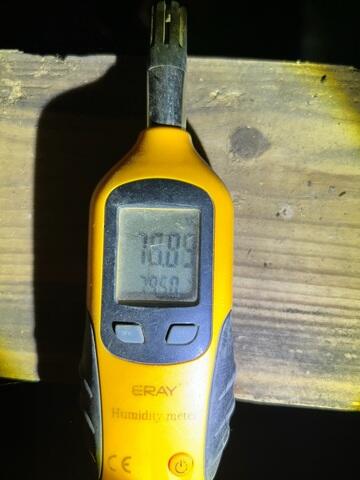
High Humidity in Crawl Space
High humidity levels like these are problematic for crawl spaces because they create an unhealthy environment that fosters mold growth, wood rot, and structural damage. Excess moisture also attracts pests and can lead to poor indoor air quality, posing health risks to the home's occupants. Addressing this issue is crucial to maintaining the integrity and safety of the home.
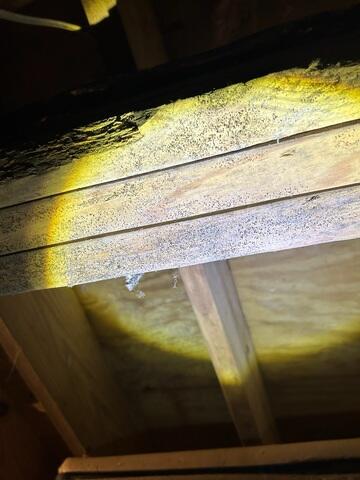
Mold Spores
Mold spores were discovered in the crawl space, a common consequence of high humidity and moisture levels. The presence of mold is not only a health hazard but also a sign of deeper foundation issues, such as sagging floors. When mold takes hold, it often indicates wood rot and structural weakening, which can lead to floors becoming uneven or sagging over time. Addressing mold and its underlying causes is essential for maintaining a safe and stable home environment.
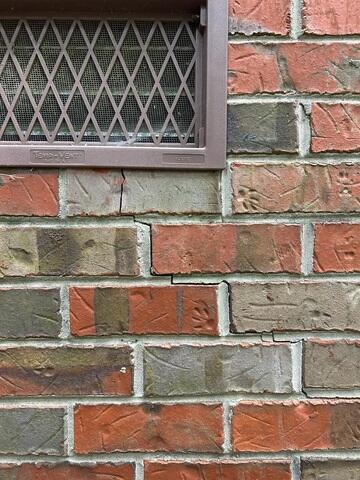
Exterior Wall Cracks
Such cracks often appear in a stair-step pattern, indicating that the foundation is shifting and causing the walls to move. Foundation settlement occurs when the soil beneath a house can no longer support its weight, leading to structural instability. Recognizing these cracks early is crucial for addressing potential damage and preventing further deterioration of the home's foundation.
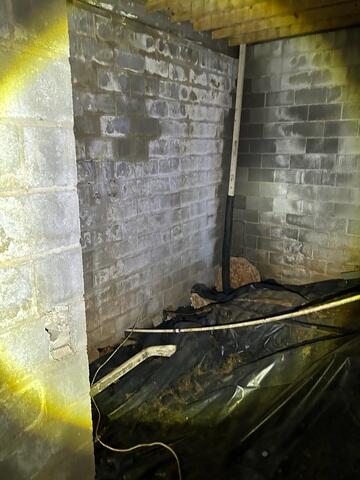
Moisture Pooling Area
The area in the crawl space where moisture has been pooling, creating a damp and potentially hazardous environment. Our expert has recommended installing a Triple Safe Sump Pump at this location to effectively manage and remove the excess water. This system will help keep the crawl space dry, preventing further moisture-related issues such as mold growth, wood rot, and structural damage, thereby ensuring a healthier and more stable foundation.
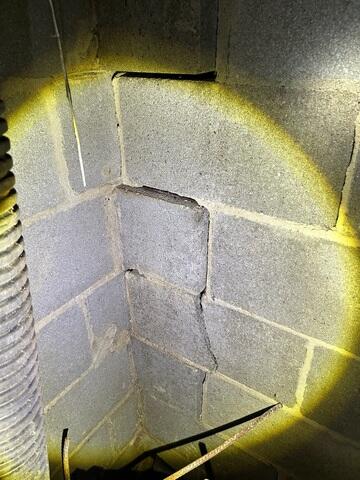
Bowing and Separating Walls
Such structural deformities are critical signs of foundation instability, often caused by soil pressure, moisture issues, or inadequate support. Bowing walls indicate that the foundation can no longer withstand external forces, leading to potential collapse if not addressed. Identifying and repairing these problems is essential to ensure the safety and integrity of the home.
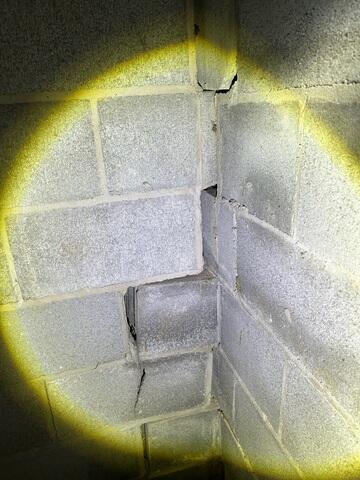
Need for Push Piers
Additional areas of cracks and bowing in the foundation walls, further indicating significant structural stress. Such damage compromises the home's stability and safety, as the foundation is no longer adequately supporting the structure. To mitigate these risks, our expert recommended the installation of push piers.
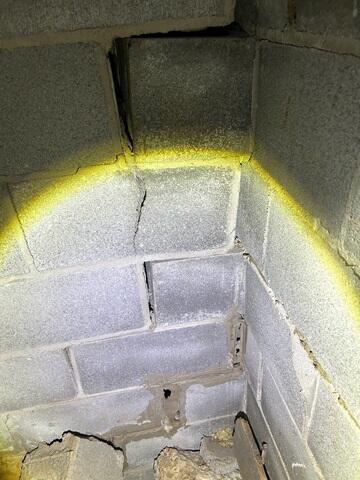
The Solution of Push Piers
Push piers are made of steel and driven deep into stable, load-bearing soil, effectively stabilizing the foundation by transferring the weight of the home to more secure ground. This solution helps prevent further cracking and bowing, ensuring a more secure and stable foundation.
 4.9
4.9